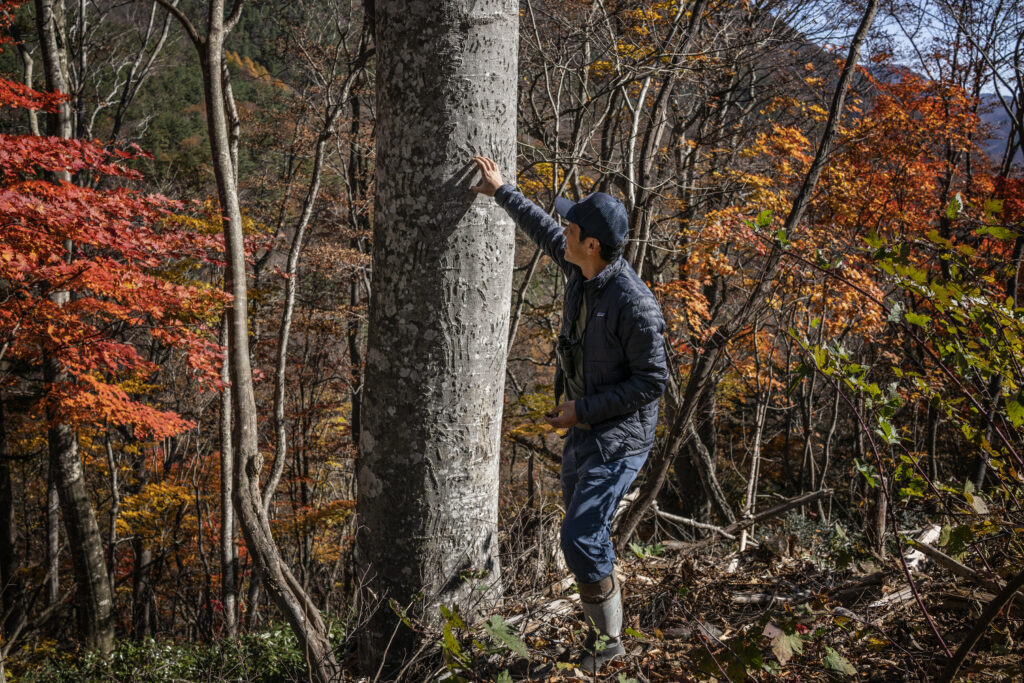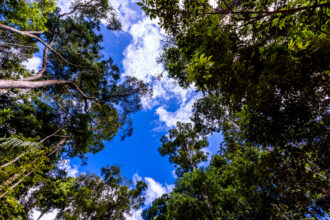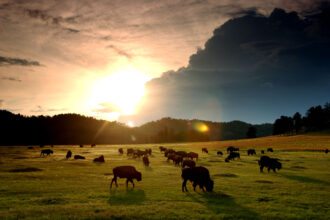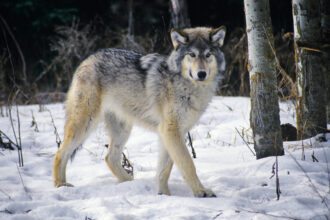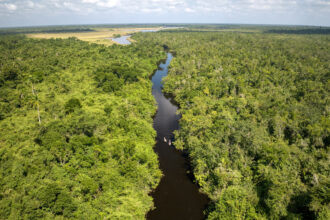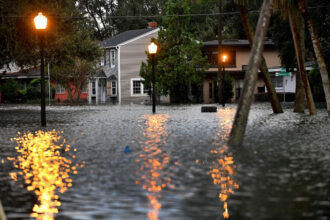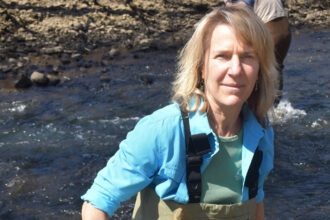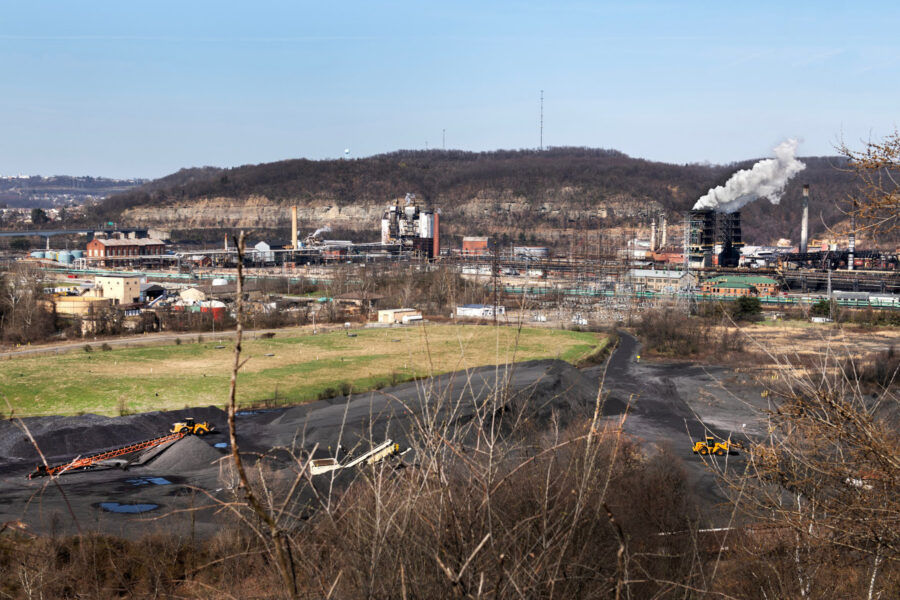“Atta!” shouts Seiichi Dejima, of the Nature Conservation Society of Japan (NCSJ), as he raises binoculars to his eyes. He’s spotted one of a breeding pair of endangered Japanese golden eagles on a perch, high above, in the 10,000 hectare (25,000 acre) Akaya Forest in Japan’s Gunma Prefecture.
Dejima and NCSJ are executing a rewilding plan to open up meadows by felling patches of monoculture conifer plantations that will, one day, regenerate with a natural mixed deciduous forest. The new meadows create space for these raptors, with wingspans of more than six feet, to swoop down on their prey.
Rewilding is an increasingly mainstream environmental movement to allow nature to heal itself, sometimes with the aid of humans, to sustainably restore biodiversity, so wildlife can, once again, prosper in regenerated and protected wild ecosystems.

In Japan, however, 44 percent of forest lands are plantations, compared with a global average of 3.5 percent. Every year during the 1960’s, over 2.1 million acres of deciduous forest was converted to monoculture conifer plantations, to supply cheap lumber for Japan’s burgeoning post-war economy, and that process continued, at a slower pace, into the early-2000s.
Much of this dense, dark monoculture plantation forest is never harvested, because so many landowners are simply too old for the backbreaking work. Much of Japan’s mountainous terrain, especially that surround just about every metropolitan area from Kyushu to southern Hokkaido, have become vast “green deserts.”

These densely-packed tree plantations, mostly of Japanese cedar, shut out sunlight and strangle biodiversity. The barren forest floors, often occupying steep slopes, quickly lose their fertile topsoil, increasing the risk of landslides and flash flooding—not an abstract threat in typhoon-prone Japan.
Dejima’s focus is fueled by a sense of urgency.
“The number of endangered species in Japan continues to increase and currently stands at 3,700,” he says. “In order to conserve them more effectively and efficiently, habitat rewilding is essential.”
In addition to the Japanese golden eagle, Among the endangered species is the iconic red-crowned ‘tancho’ crane, among the rarest cranes in the world, which graces the logo of Japan Airlines and, in Japan, is restricted to northeast Hokkaido. The Japanese crested Ibis, or ‘toki’, was successfully reintroduced in 2003 to Sado Island after the last wild one in Japan died at the Sado Japanese Crested Ibis Conservation Center in 2003. The Japanese giant salamander in the southwest of the country is fully aquatic and measures up to five feet in length.

Therein lies the challenge—entire mountains, sometimes whole mountain ranges, in Japan are smothered by these planted, monoculture forests.
Ironically, the country’s sacred Japanese cedar (cryptomeria) dominate the plantations. These magnificent trees, often called “Japanese redwoods” because of their elegant red trunks, can attain a height of 230 feet, and live well over 1,000 years. The trees historically made up 1 percent of Japan’s forests, but today they are as common, and problematic, as weeds.
In contrast to the Akaya Forest, which sits entirely upon government-owned land, 57 percent of Japan’s forestlands are privately owned.
“In the Minami-Sanriku area of Miyagi Prefecture, rewilding efforts have already begun in private forests,” Dejima says. “The owner of the forest holds 100 hectares (247 acres) of forest,” he notes of one project.
While the area being returned to nature may seem too small to make much of a difference, he says such diminutive projects have to play a part in the effort.
”We believe that it is not easy to implement this project on private land where there are no large landowners, but we also believe that it is necessary.”
Seventy percent of the plots of privately-owned land are small—less than 1 hectare (2.5 acres) of land.
Western Tokyo sits almost entirely within the 300,500-acre Chichibu Tama Kai National Park, which straddles the corners of Yamanashi, Saitama and Nagano Prefectures and the City of Tokyo. Despite being a national park, vast swathes are covered with Japanese cedar plantations, a lot of them on small privately-owned plots. The government adopted this system of mixed land ownership to protect wild spaces from the potential sprawl of the country’s high population density.

To rewild an area the size of Chichibu Tama Kai National Park, with its patchwork of privately-owned land, local government land and prefectural land presents greater hurdles to environmentalists. “That is why the rewilding movement here in Japan is progressing slowly” compared to many other developed nations, Dejima says. But, he concludes, “the biggest challenge, by far, is funding.”
Shouta Teraya, Director of the Natural Environment Section at Shari Town Hall in Hokkaido, concurs with Dejima. “Today, NGOs and local voluntary organizations are taking the lead in ‘rewilding’ conservation activities throughout Japan. However, stable funding and new leaders are a challenge.”
“It is the national government that should set the policy,” he said. “It is then up to the local governments to work with local people and NGOs. They will only succeed if government agencies are prepared to assume responsibility.”
Small plots and private donations have a long legacy in the area.
A century ago, the northern island of Hokkaido, the homeland of the indigenous Ainu people, was still a frontier, but it had been drawing Japanese people from the main islands seeking opportunity since the 17th century. They grabbed Ainu land and forcibly assimilated the native population into their culture.
By the early 20th century, this wave of Japanese settlers started carving out homesteads on the Shiretoko Peninsula in the northeast of Hokkaido. A land of Ezo brown bears, salmon, volcanoes and the southernmost winter ocean ice floes on the planet, the northern end of the peninsula was designated a national park in 1964 and a UNESCO World Heritage Site in 2005.
Yet settlers continued living within the boundaries of the Shari Town portion of the national park. At its peak, in the ‘50s and ‘60s, there were 60 settlements, occupying 2,127 acres of land within the park—the last few settlers holding out until 1973.


In February 1977, local Mayor Yutaka Fujitani, of Shari Town, fearing a wave of development driven by Japan’s booming economy, launched what was essentially a crowdfunding campaign in which private citizens from all over Japan would purchase, through donations, 100 square meters of land. The audacious plan was called the Shiretoko 100 Square Meters Movement.
“It was a completely new concept to buy up lands with donated money from ordinary people in order to protect the area from resort developers,” says Daisuke Imura, Shiretoko National Park Visitor Use Coordinator. “In that way, Shari Town became known as a pioneer in Japan’s environmental movement.”
The plan was to purchase land that was being used by settlers for agriculture within the national park and then rewild it. In 1977, they bought 25 percent of the farmsteaders’ land. By 1980, they’d acquired a total of 40 percent.
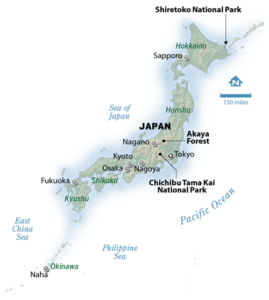
It was not until 2010 that all the former settlers’ land within the national park had been purchased, which required 49,000 people nationwide to donate a total of 520 million yen (more than $5.9 million at the 2010 exchange rate), over the span of three decades.
On an unseasonably warm October morning, a crowd of volunteers gathered in front of the Shiretoko National Park Nature Center, where the nearly 100 tree-planters-for-a-day quietly filed onto buses bound for the forest.
The welcoming committee, a lone wild fox, inspected the assembly, which included toddlers and one centenarian, as they quietly marched by in single file to a cleared plot in an amphitheater of autumnal Japanese larch.
Masanao Nakanishi, of the Shiretoko Nature Foundation, gently held up a single, five year old “todomatsui” (Marie’s fir) sapling for everyone to behold. It looked like a houseplant with hemp rope, instead of a pot, securing the soil to the roots.
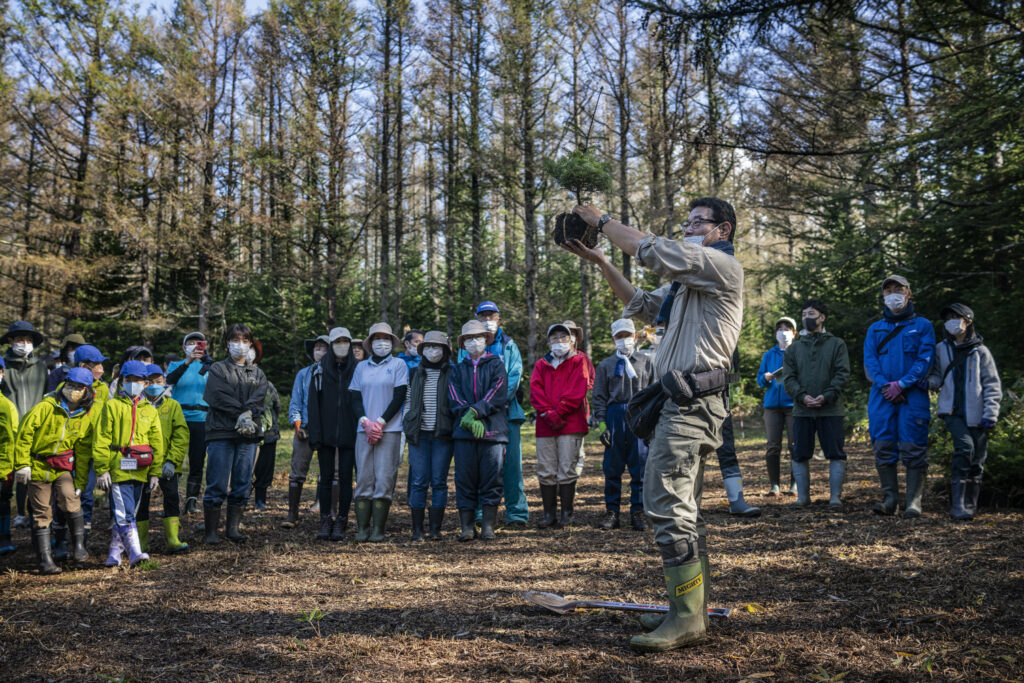
“Trace a line around the outside of the sapling but give it extra space,” he advised as he set the sapling down. Then, he skillfully dug a hole larger than the circumference of the Marie’s fir in the soft volcanic soil, set the young tree in its new home and replaced the dirt.
In less than a minute, the tree was ready to begin setting down its roots.
Grabbing shovels, the crowd spread out in multigenerational family groups, young couples and gaggles of friends to get to work.
Thirty minutes later, what had been a cleared plot of ground had been reborn as a new, young forest.
Piece by piece, year by year, this expanse of Shiretoko has become wild again with the aid of environmentally-conscious volunteers who help nature recover.
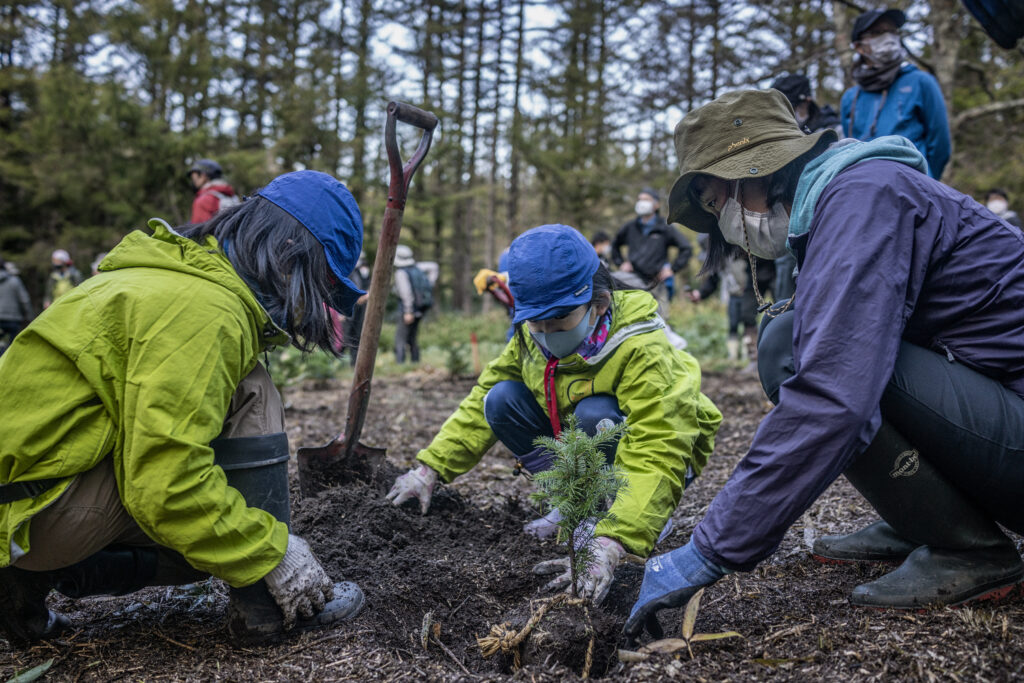
These former agricultural lands have been fully recolonized by Ezo brown bear—a cousin of the Kodiak bears of Alaska, Yezo shika (deer), fox and eagles, all because of the Shiretoko 100 Square Meter Movement.
But the success has not been cheap. Rewilding the 861 hectares of land required four decades of work and more than $5 million in funding.
That brings us back to Seiichi Dejima’s project, which, although more modest in scale, may actually be the better model for upscaling the effort to be able to rewild millions of hectares of land in Japan.
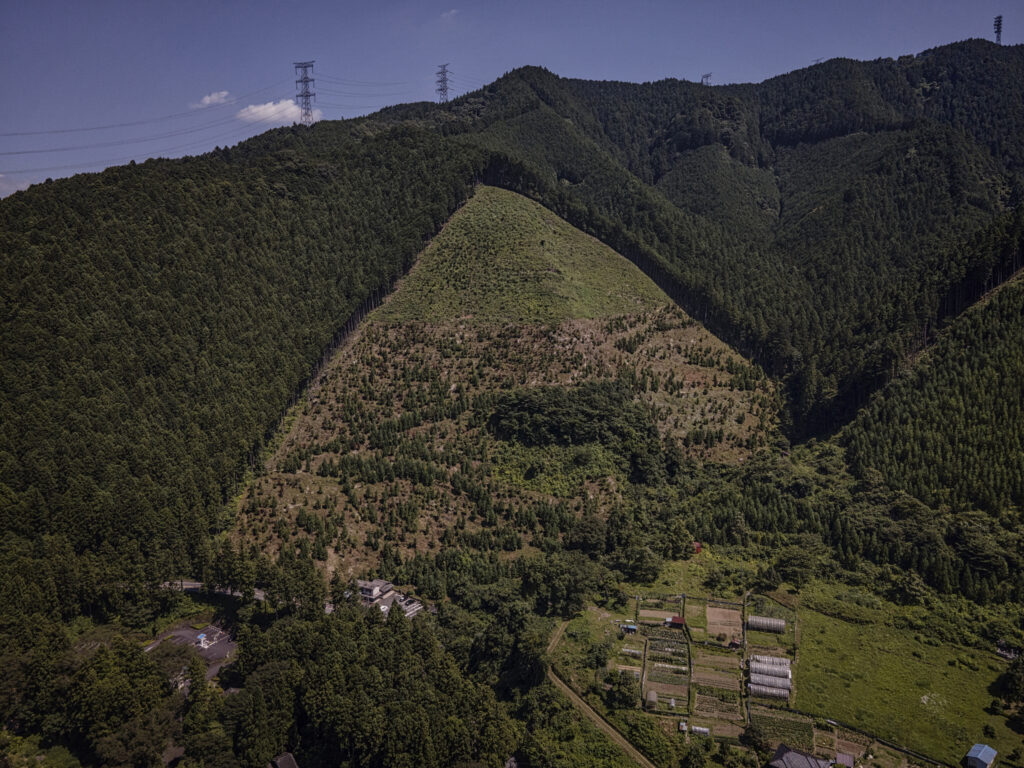
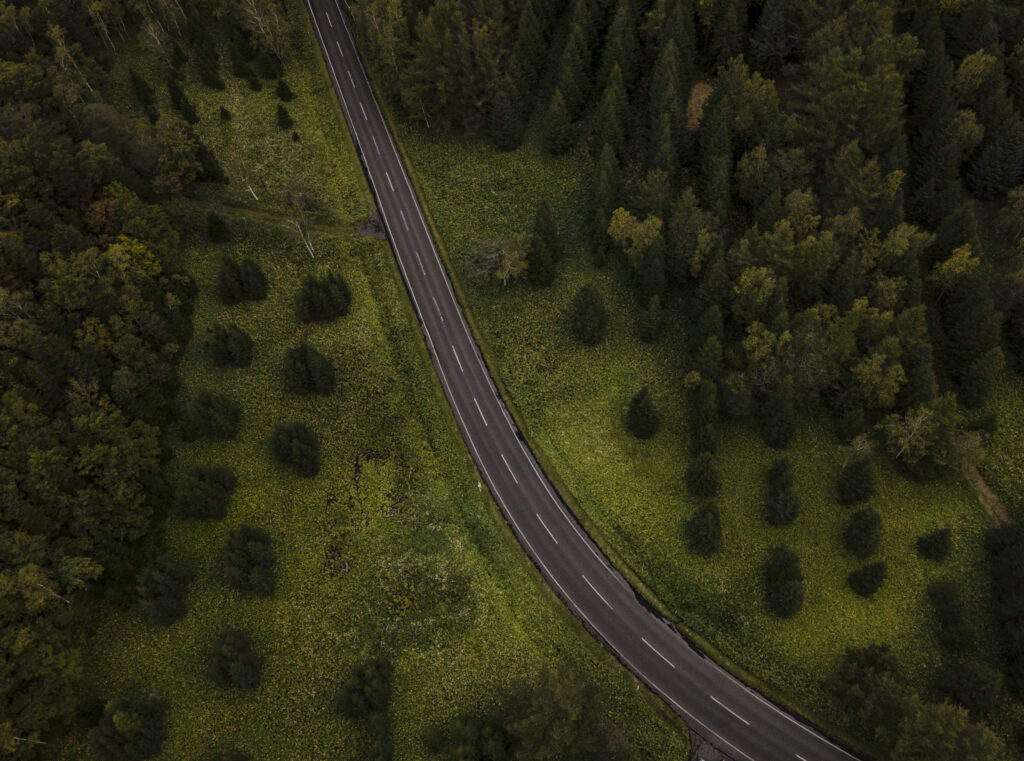
His simple plan of creating small clearings in tree plantations and then letting nature do the rewilding work, before moving on to clearing the next plot, might just be the most viable plan, given the limited funds and labor available for the work.
Perhaps taking the best of both approaches to rebuild nature–expanding the community organizing of the Shiretoko 100 Square Meters Movement nationwide while Dejima continues his simple program of cutting meadows into forests—large-scale rewilding in Japan could be within reach.
“If social interest is high, politics will move,” says Shouta Teraya of the Natural Environment Section for Shari Town.
But for these efforts to gain traction, the mindset of the Japanese population may need some rewilding, too.
“Land that used to be fields and mountains has been developed and asphalted,” Teraya lamented of land where older people played outside in their younger years. “The environment surrounding children has changed.”
This story is funded by readers like you.
Our nonprofit newsroom provides award-winning climate coverage free of charge and advertising. We rely on donations from readers like you to keep going. Please donate now to support our work.
Donate Now“Young Japanese spend their holidays on social networking sites such as YouTube and TikTok, video games, shopping, sports, etc., and rarely go on picnics with friends.”
Developing a passion for restoring nature in those young people requires communicating with them about rewilding in the digital and developed places where they spend their time, and for global environmental organizations to be more creative with their public relations efforts, he said.
But Seiichi Dejima believes building public support for rewilding is as simple as the meadows he cuts in forests.
“We need to increase the number of jobs like mine, connected to environmental conservation activities,” he said. “If so, we can get more young people in Japan interested in the environment.”
